- |<
- <
- 1
- >
- >|
-
Kazuma Fuchimoto, Shin-ichi Minato, Maomi UenoArticle type: Original Paper
2022Volume 37Issue 5 Pages A-M23_1-11
Published: September 01, 2022
Released on J-STAGE: September 01, 2022
JOURNAL FREE ACCESSRecently, the necessity of“ parallel test forms ”for which each form comprises a different set of items, but which still has equivalent measurement accuracy has been emerging. An important issue for automated test assembly is to assemble as many parallel test forms as possible. Although many automated test assembly methods exist, the maximum clique using the integer programming method is known to assemble the greatest number of tests with the highest measurement accuracy. However, the method requires one month or more to assemble 450,000 tests due to the high time complexity of integer programming. This study proposes a new automated test assembly using Zerosuppressed Binary Decision Diagrams (ZDD). A ZDD is a graphical representation for a set of item combinations. This is derived by reducing a binary decision tree. In the proposed method, each node in the binary decision tree corresponds to an element of an item bank and has two edges if the item (node) is contained in a uniform test. Furthermore, all equivalent nodes (having the same measurement accuracy and the same test length) are shared. Finally, this study provides simulation and actual data experiments to demonstrate the effectiveness of the proposed method. The proposed method can assemble 450,000 tests within 24 hours.
View full abstractDownload PDF (4144K) -
Shigeki Kohda, Kenichi YoshidaArticle type: Original Paper (AI System Paper)
2022Volume 37Issue 5 Pages B-M44_1-9
Published: September 01, 2022
Released on J-STAGE: September 01, 2022
JOURNAL FREE ACCESSHigh-frequency trading (HFT), which is a type of algorithmic trading, accounts for a significant percentage of trading volume in equity markets. Co-location, which is a low-latency service, enables high-speed transactions. For example, 70% of all orders traded on the Tokyo Stock Exchange use co-location. Because many HFT companies use co-location services, analyzing the characteristics of HFT can assist in understanding the market and identify improved trading strategies. Our study, which uses data from the Tokyo Stock Exchange (ranked as the third largest stock exchange in the world in terms of market capitalization) clarifies the following: 1) Most orders are filled or canceled without changing the price or the quantity. 2) If price rises due to an execution, the sell order significantly increases compared to the buy order, and the price gradually decreases. 3) After a price change, the price before the change returns within 300 s. 4) Based on the above findings, we analyze a simple trading strategy that can realize a profit with 90% reliability.
View full abstractDownload PDF (599K) -
A Supervised-Unsupervised Hybrid ApproachShu Nakamura, Koh Takeuchi, Hisashi Kashima, Takeshi Kishikawa, Tomoyu ...Article type: Original Paper
2022Volume 37Issue 5 Pages C-M42_1-10
Published: September 01, 2022
Released on J-STAGE: September 01, 2022
JOURNAL FREE ACCESSRecent studies have demonstrated that the injection of malicious messages into in-vehicle networks can cause unintended operation of the controls of vehicles, which has been highlighted as one of the most serious and urgent issues that threaten the safety of automobiles. Attempts have been made to use supervised and unsupervised machine learning for automatic, data-driven intrusion detection. However, previous approaches considered only the detection and classification of attacks on a target car based on the data of the same model of car; they are relatively ineffective when the objective is to handle new car models for which not many data are yet available. In this paper, we address the task of detecting and classifying malicious messages injected into in-vehicle networks by transferring “knowledge” from different car models for which ample data exist. In our proposed approach to the dataset of new car models a pretrained classification model that was supervised-trained on the data of previous car models is combined it with an unsupervised detector that uses only the normal data from the target car. The advantage of the proposed approach is that it does not require past data and therefore is applicable to various scenarios. The results of our experiments using in-vehicle CAN messages datasets collected from three different cars show the effectiveness of the proposed approach.
View full abstractDownload PDF (2484K)
- |<
- <
- 1
- >
- >|